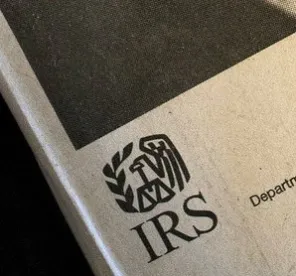Beginning September 1, 2019, employers that sponsor cash balance plans and certain merged plans can sleep easier. Revenue Procedure 2019-20, issued by the Internal Revenue Service (IRS) on May 1, 2019, opens the IRS’s determination letter program for individually designed “statutory hybrid plans” and certain “merged plans.” Plan sponsors will recall that beginning January 1, 2017, the IRS’s determination letter program for individually designed plans was significantly curtailed by Revenue Procedure 2016-37. Revenue Procedure 2016-37 provided that plan sponsors of individually designed plans could seek a determination letter from the IRS only for initial plan qualification, plan terminations, or other circumstances to be provided by the IRS at a later time.
Statutory Hybrid Plans
A statutory hybrid plan is a type of defined benefit plan in which a certain formula is used to determine the current balance or value of a participant’s accumulated benefit. The most common example is a cash balance plan. Plan sponsors should note the following parameters and procedures for the expansion of the determination letter program to cover statutory hybrid plans:
-
Applications will only be accepted for a one-year period (which begins on September 1, 2019, and ends on August 31, 2020).
-
The submission procedures for statutory hybrid plans are identical to those that apply to other individually designed plans.
-
The IRS’s review will be based on the 2017 Required Amendments List (found in IRS Notice 2017-72) and all previous Required Amendment Lists and Cumulative Lists.
The IRS has noted that partially statutory hybrid plans (e.g., plans that contain multiple benefit formulas, only one of which is a hybrid formula) are eligible for a determination letter—the plan need only have one hybrid formula to be eligible.
Merged Plans
Revenue Procedure 2019-20 also opens up the determination letter program to “merged plans.” Although this term may seem to encompass many situations in which two plans are combined, plan sponsors should pay close attention to the requirements of the Revenue Procedure, including all applicable time limits, to ensure they are eligible to submit a determination letter application. Revenue Procedure 2019-20 lists the following as eligibility requirements:
-
The plan merger must be in connection with a corporate merger, acquisition, or other similar business transaction among “unrelated entities” which each maintained its own plan or plans prior to the plan merger. This means that entities in the same controlled group that each sponsor retirement plans and then merge those plans are not eligible to submit a determination letter application.
-
The date of the plan merger must occur no later than the last day of the plan year following the plan year of the merger of the unrelated entities.
-
The determination letter application for the merged plan must be submitted no earlier than the date of the plan merger and no later than the last day of the merged plan’s first plan year.
-
The IRS’s review of the merged plan will be based on the Required Amendments List that was issued in the second full calendar year preceding the determination letter application. For example, if a determination letter application is submitted on June 1, 2021, the IRS’s review would take into account all items on the 2019 Required Amendments List (and all previously issued Required Amendments Lists and Cumulative Lists).
Timing Example for Merged Plans

Sanctions
Revenue Procedure 2019-20 also sets forth a sanction structure for plan document failures that are discovered during the determination letter process for the above-mentioned plans. We have labeled these sanctions green (no penalty), orange (intermediate penalty), and red (highest-level penalty) for convenience.
|
|
Statutory Hybrid Plans |
Merged Plans |
|
Green |
No penalty for plan document failure with respect to provisions required to meet the final hybrid plan regulations |
No penalty for plan document failures regarding plan provisions included to effectuate the merger |
|
Orange |
There is a reduced penalty (equal to the voluntary correction program (VCP) fee that would have been required for the failure) for other plan document failures in two situations: (1) if an amendment creates the failure, the amendment was adopted timely and in good faith with the intent of maintaining the qualified status of the plan, or (2) for required amendments, the plan sponsor reasonably and in good faith determined that no amendment was required. |
The penalty is identical to the relief for statutory hybrid plans (left). |
|
Red |
For other plan document failures, the penalty is equal to 150 percent to 250 percent (depending on the duration of the failure) of the applicable VCP fee that would have been required. |
The penalty is identical to the penalty for statutory hybrid plans (left). |





 />i
/>i
